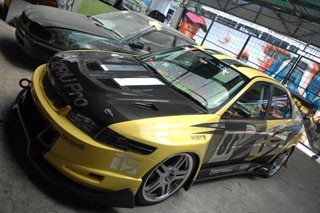
Toyota said on Monday it will conduct a voluntary safety recall of some 94,000 units of its new 2011MY Sienna minivan (built before early November 2010) because of a potential problem with the brake light switch bracket. According to the Japanese automaker, due to the proximity with the parking brake, the stop lamp switch bracket could be deformed by the driver’s foot during parking brake operation.
The company said that depending how deformed the bracket becomes, the brake lights may remain on or, if the deformation is significant, the brakes could become partially engaged due to contact from the bracket, resulting in brake drag with associated brake noise, brake vibration, and/or illumination of the brake warning light.
"No other Toyota or Lexus vehicles are involved in this recall, and Toyota is not aware of any accidents or injuries related to this condition," the Japanese carmaker said in a statement.
Owners of the affected Sienna models will be notified about the recall in mid-January 2011, but the fix won't take place before late February due to the lack of parts.
"Owners will receive a second notice by first class mail in approximately late February, once replacement parts become available, and asked to make an appointment with any Toyota dealer to have the remedy performed at no charge," Toyota said.
From Toyota Press Release:
Customer FAQ for Sienna Stop Lamp Switch Bracket Recall
1. Which models are involved in the recall?
Toyota is recalling approximately 94,000 2011 Model Year Sienna vehicles produced before early November 2010. No other vehicles are affected by this recall.
2. What is the condition that prompted Toyota to take this action?
Due to the proximity of the stop lamp (brake light) switch bracket to the parking brake pedal when the parking brake is fully applied, the bracket could, in limited circumstances, be deformed by the driver’s food during parking brake operation.
Depending on the amount of bracket deformation, this condition could cause the brake lights to remain on. If the deformation is significant, the brakes could become partially engaged due to contact from the bracket, resulting in brake drag with associated brake noise, brake vibration, and/or illumination of the brake warning light. If this condition is not noticed and the vehicle continues to be driven, braking effectiveness could be reduced.
3. Are there any warnings that this condition has occurred?
Depending on the amount of stop lamp switch bracket deformation, drivers may notice the rear brake lights remaining “ON” and/or the brakes remaining slightly applied, resulting in brake drag with associated brake noise, brake vibration, and/or illumination of the brake warning light.
4. What is Toyota going to do to remedy this condition?
As part of this recall, Toyota dealers will replace the bracket assembly, which includes the stop lamp switch bracket, with a new one that has been redesigned to take into account the proximity of the component to the parking brake pedal.
5. Is the repair covered by warranty? Will I have to pay any money out of pocket for this repair?
This repair will be performed at no charge to the customer.
6. What should I do if my brake warning lamp is currently illuminated?
If a customer’s the brake warning lamp has illuminated, he/she is asked to please make an appointment with a local Toyota or Lexus dealership for diagnosis. If the condition is confirmed, the dealer will temporarily move the stop lamp switch bracket back to its designed position. The customer will be requested to return to the dealership when the remedy parts become available, as directed by their recall notice.
7. Does Toyota have any record of accidents or injuries related to this defect?
Toyota is not aware of any accidents or injuries related to this defect.
8. What should I do if I still have questions or concerns?
If you still have questions or concerns that have not been addressed here, please contact the Toyota Customer Experience Center at 1-800-331-4331.
_______________________________GALLERY_______________________________

















































































